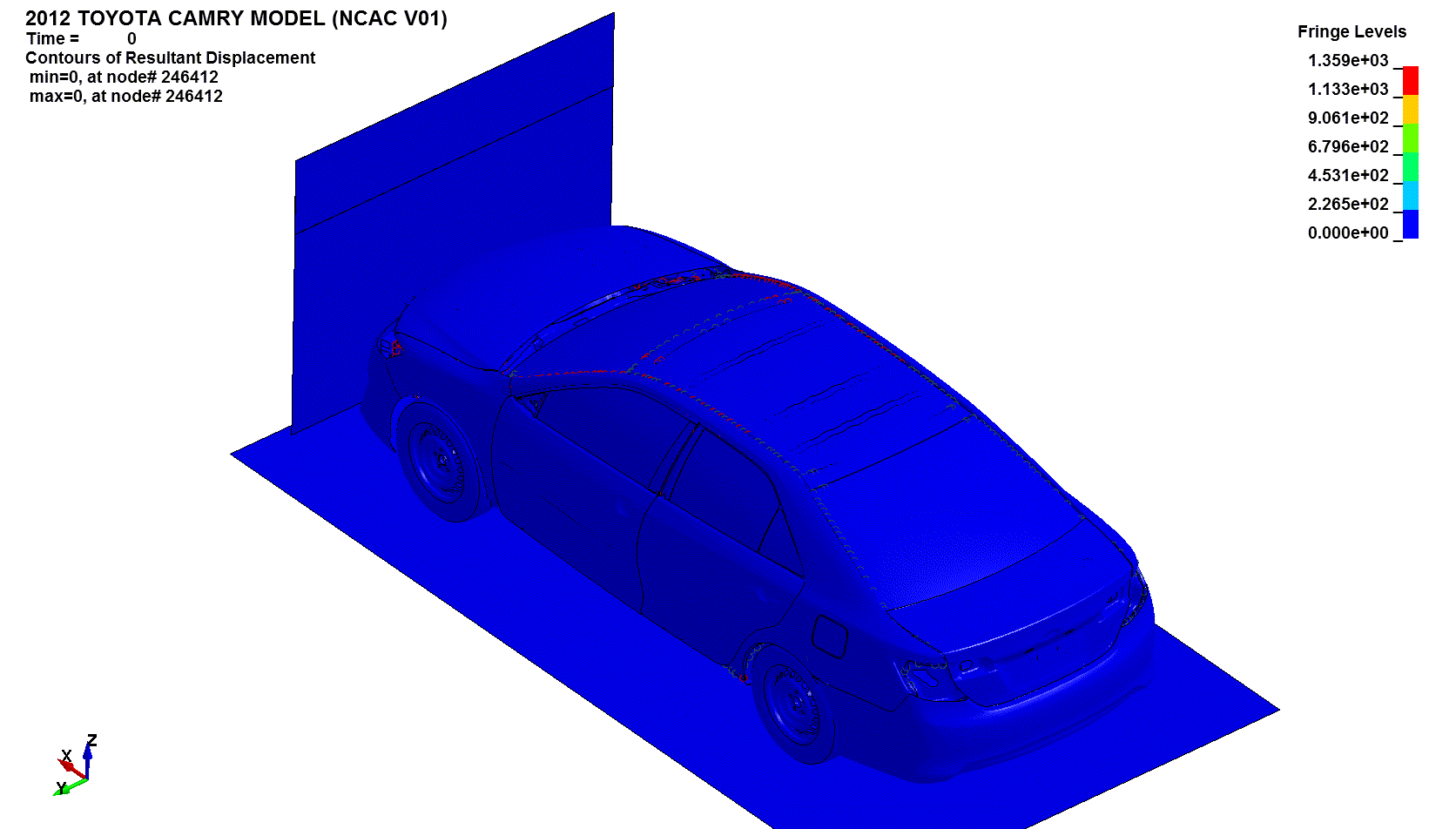A crash simulation is an explicit finite element simulation. It is usually used to model mechanical tasks in the field of short-term dynamics. A classic application example is the simulation of an accident (crash test) in the automotive industry. This allows us to determine whether a vehicle meets the requirements for occupant safety before it goes into series production. This is usually considerably more cost-effective, as our customers do not have to build and destroy a prototype.

In contrast to the classical (implicit) FE- calculation dynamic loads, which occur over a short period of time (duration of the impact) and act on components or assemblies, play a role.
Our services for the mechanical mapping of tasks in the field of short-term dynamics
- Simulation of crash tests (crash calculation)
- Carrying out fall tests and fall analyses
- explicit finite element simulation
- Determination of explosion effects (e.g. when opening an airbag)
Save time and costs and secure your prototype against dynamic loads by a virtual crash test !
What results can you expect from a crash analysis ?
Provided that stiffnesses, material properties (usually non-linear) and contact conditions are correctly defined in the corresponding finite element model, one obtains not only the total deformations under dynamic load action, but also information about component stresses, strains and overloads of individual components in interaction with other components.
Advantages of crash simulation for your development process
Crash tests are not only complex to carry out, but also time-consuming and cost-intensive. In addition, the corresponding test facilities are not available at all times, but often require long-term scheduling and corresponding coordination. Thus, these special facilities are usually booked up weeks and months in advance.
The wish of every manufacturer is therefore to prove or validate the fulfilment of the (safety) requirements for his product (e.g. vehicle) by means of a one-off test. Ideally, the costs for using the test facility are incurred only once, just as only one prototype has to be built and destroyed. But how do you want to prove the correct function and safety of your product with only one test ?
In practice, FE simulations of the crash (crash simulations) are therefore sometimes carried out on entire vehicle models before the test bench date. By evaluating the results of this "virtual" crash test, we can easily identify the critical components that would also fail in the real test.
As part of the product development process, we first identify structural-mechanical weak points by means of an FEM calculation. We then eliminate these by optimizing the design accordingly. Finally, we insert the optimized components back into the existing FEM model and run the simulation again. This procedure is repeated until the results of the crash simulation show that a product would survive the prototype test either without damage or with the expected and permissible damage within the scope of the product approval.
By consistently applying crash simulations as part of the virtual product development process, we help you minimize the costs associated with expensive prototype testing.
Do you have questions or need more information ? You'll find here answers to the most common questions about the preparation of offers and the project process !
Please contact us, and request our free, non-binding offer today !